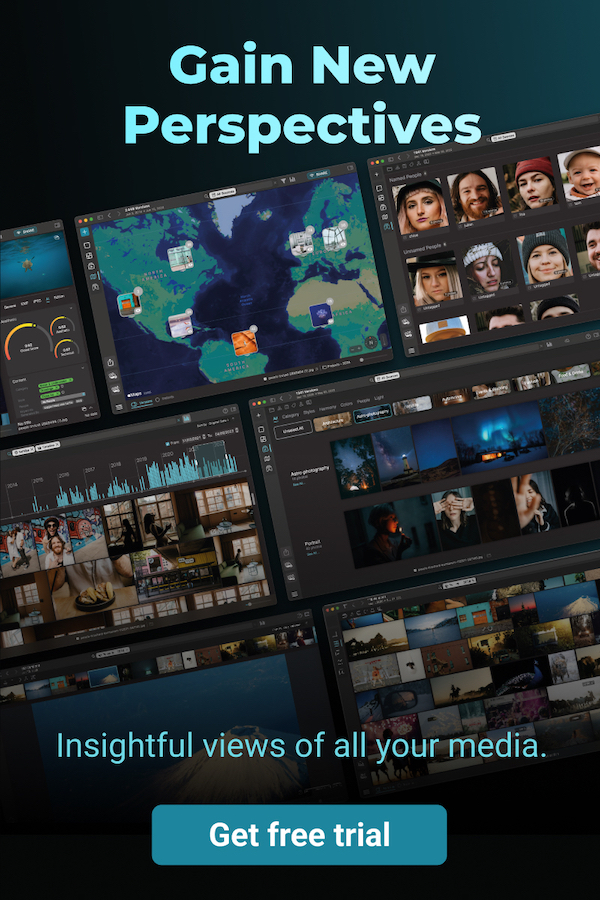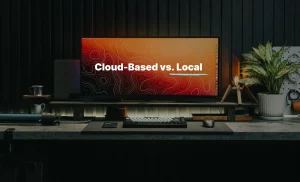In today’s digital world, keeping track of all your photos can quickly become overwhelming, whether you’re a pro or just a hobbyist. From sorting through hundreds (or even thousands) of images to finding that perfect shot, it’s easy to lose time and get frustrated. That’s where photo management comes in. With dedicated software that includes features like powerful search, facial recognition, and smart tagging, organizing your photos becomes a breeze. The right software helps you stay in control of your collection, so you can spend less time managing and more time creating.
What is a Photo Management Software?
Photo management software helps users organize, store, edit, and protect digital photo collections. These tools are essential for both professionals and individuals with large image libraries.

What Does a Photo Manager Do?
In the digital age of photography, both amateur and professional photographers find themselves managing hundreds of files, which can quickly become overwhelming. This is where photo management software steps in, becoming your ultimate ally and making it easier and more enjoyable to handle your digital images. At its core, a photo manager helps characterize your photos through handy features like advanced tagging, facial recognition, and even AI-powered content analysis. It also simplifies your work as a photographer by automating those tedious tasks like sorting and categorizing. This means you can quickly find that perfect shot among thousands, saving you time and frustration!
But that’s not all! Photo managers have another trick up their sleeve: they’re fantastic at handling non-destructive editing. This game-changing feature has revolutionized how we work with our images. With modern software like Adobe Lightroom, Capture One, and Luminar, you can edit your photos without touching the original file. This means you can create multiple versions of the same image, experimenting with different styles while keeping your initial shot safe. While this flexibility is fantastic, it can lead to a lot of files to manage. That’s where the image organization rool really shines! It helps you organize, view, and find all those different versions easily, so you can focus on what you love—creating stunning images!

Image organizing tools are also designed to handle photos taken with various camera types, whether you’re shooting with a smartphone or a high-end DSLR. Accessing metadata is another great perk; it allows you to view and edit important information like camera settings, location data, and copyright details—all in one place!
When it comes to organization, photo managers are true superstars. They offer intuitive folder structures, smart albums, and customizable collections, making it super easy to keep your digital archive neat and tidy. Finally, they provide secure options to save your photos, including cloud storage integration and backup features, ensuring that your precious memories and professional work are always safe and sound. With a good photo manager by your side, managing your photography has never been easier or more fun!
What Photo Library Organizer Is Available on the Market?
Free vs. Paid Options
Good news! There are excellent options for every budget, and to find the right one, simply compare free vs paid photo software. If you’re looking for a free solution, Google Photos is a popular choice, offering basic organization tools and 15GB of free storage. For Mac users, Apple Photos comes pre-installed and serves as a great starting point.
If you’re willing to invest a little, Adobe Lightroom and Capture One Pro are professional-grade solutions that offer advanced features, ideal for photographers seeking more control and flexibility.
Cloud vs. On-Premise Solutions
Now, let’s talk about where your photos will live. Cloud-Based vs Local Photo Management Software presents two different approaches. Cloud-based solutions like Google Photos or Adobe’s Creative Cloud offer the convenience of accessing your photos from anywhere. On the other hand, on-premise software like FastStone Image Viewer (Windows) or the Media Manager Peakto (Mac) keeps everything on your local machine, giving you more control over your data. Can’t decide? Some software offers hybrid models, allowing you to keep current photos locally while archiving older ones in the cloud.
Mac vs. PC Compatibility
Good news for Mac users! Many great options like Adobe Lightroom and Peakto are available for Mac. However, some software like FastStone Image Viewer is Windows-only, so keep that in mind when choosing.
AI-Powered Features
Here’s where things get really exciting! Many modern players are now integrating artificial intelligence (AI), and this AI enhances photo management software to make your life much easier. AI can revolutionize how you manage your photos by automating tasks that would normally take up a lot of time.
For example, Image Content Analysis allows AI to automatically tag and categorize your photos based on the objects, scenes, or themes within them, saving you the trouble of manual tagging. Face Recognition technology can help you easily find photos of specific people without having to manually tag each one. Need that perfect beach sunset photo? With Search by Description, simply type a description like “beach sunset,” and AI will locate it for you in seconds. And with Search by Similarities, AI can quickly identify photos with similar compositions, colors, or elements, enabling you to find images that share a common aesthetic or theme with just one click.
What Are the Features of a Photo Management Software?
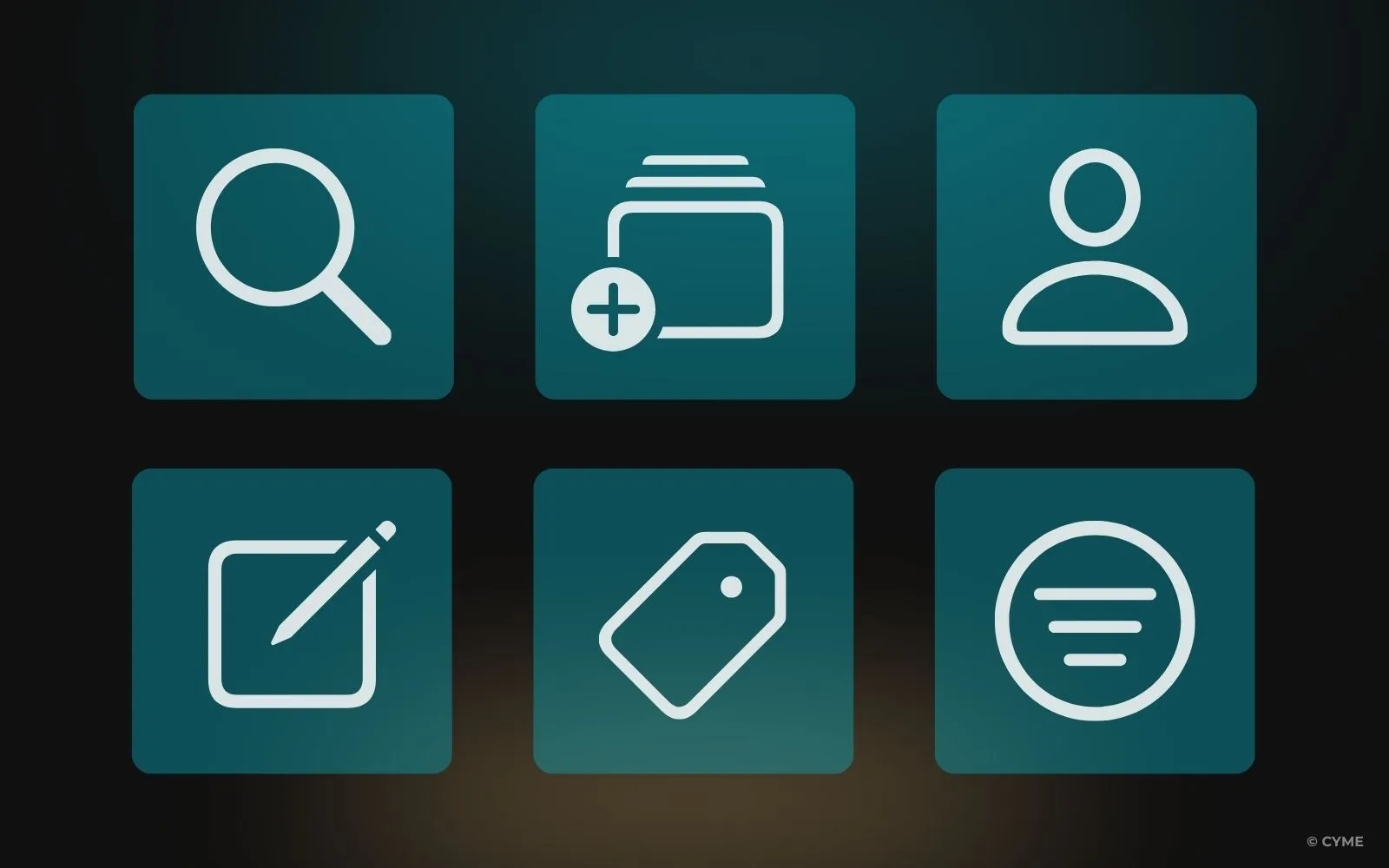
A photography asset organizer is like having a personal digital assistant for your visual memories. These clever tools transform the often overwhelming task of organizing thousands of photos into a breeze, allowing you to streamline your photo management workflows.
1. Facial Recognition
With advanced facial recognition technology, the software can automatically identify and group photos of specific people, saving you hours of manual sorting. Imagine being able to instantly find all pictures of your grandparents or your best friend with just a simple search!
2. Photo Tagging
Many tools also include automatic tagging, which uses AI to label your images with keywords like “mountains,” “pets,” or “party,” saving you hours of manual work.
3. AI-Powered Search
4. Search by Similar
What is the best program to organize photos?
How to effectively manage all my photos?
To organize all your digital photos, start by gathering them into one place from various devices and storage locations. Use folders to sort by year, event, or theme, and take advantage of photo organization software to tag and categorize images. Back up your collection to both cloud storage and external drives to ensure safety. This process might take time, but organizing step by step will make your photo collection easier to browse and enjoy.
What are the most important features in photo management software?
5. Creating Selections
Creating customizable albums is a breeze when all your images are in one place, allowing you to curate and showcase your favorite memories in beautiful, themed collections.
6. Powerful Filters
7. Keyword Tagging
Use keywords to tag photos for efficient retrieval (e.g., “beach,” “vacation”). A consistent system ensures uniformity, and it’s easier when you have one tool to manage all your content. Tagging is especially helpful for retrieving your images or when you want to sell them on a photo bank.
8. Color Coding
Categorize photos visually using color labels. Color coding is an effective visual technique to organize and streamline photo editing workflows. For example, you can tag in-progress images in ‘yellow’ and complete edits in ‘green’.
9. Folder Structuring: Create a clear folder hierarchy based on years, events, or categories. Use a naming convention like “YYYY-MM” to ensure proper sorting.
10. Metadata Management: Add context using metadata, including location, camera settings, and date. Templates streamline this for specific types of photography.
11. Backup Strategy: Regularly back up your collection using both cloud services and external drives for added security.
12. Smart Collections: Automate organization with smart collections based on predefined criteria such as ratings or keywords.
How to Choose the Right Photo Management Software?
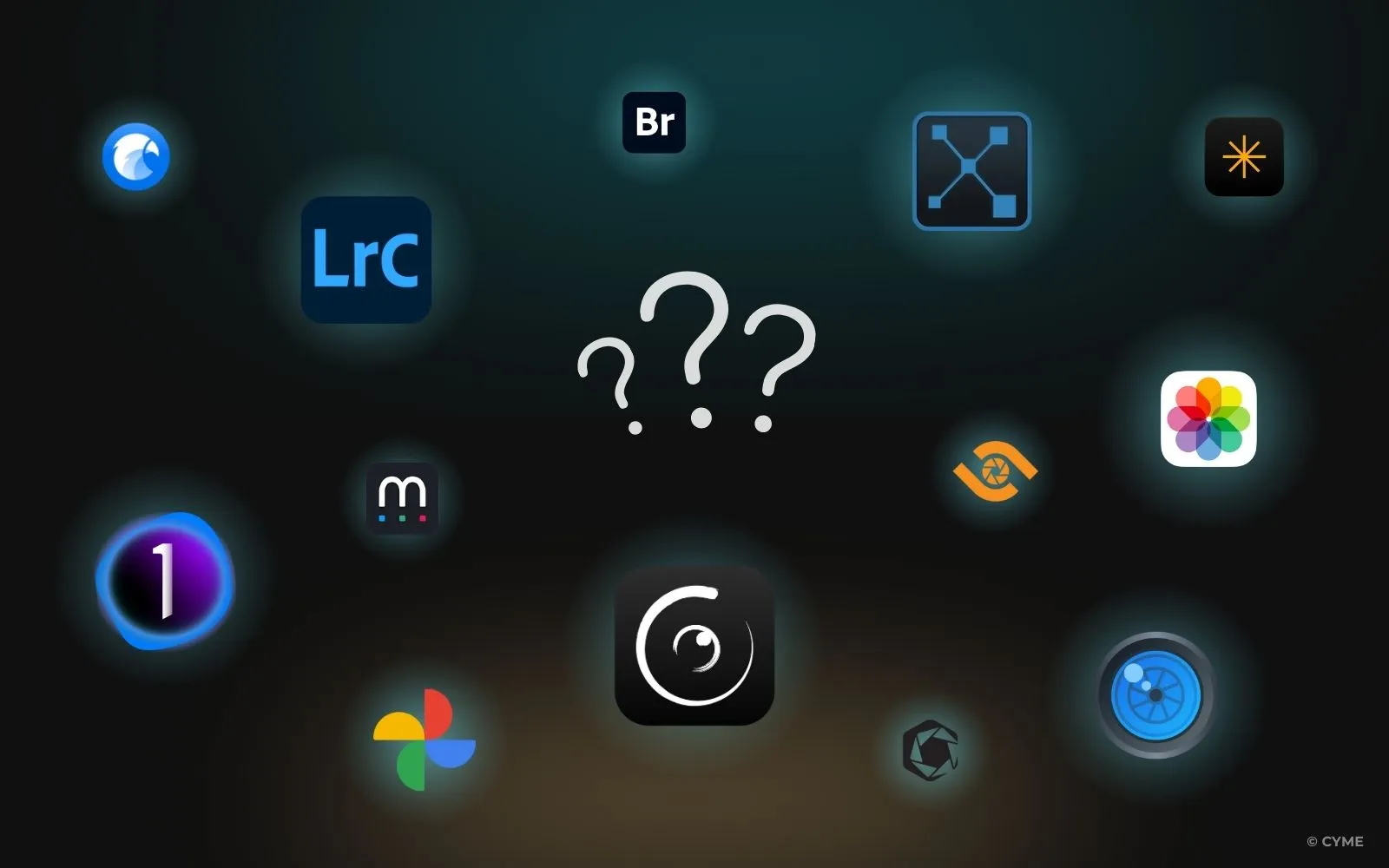
Choosing the right solution can be a bit overwhelming, but with a few key considerations, you can find the perfect fit for your needs. If you have a large photo collection, look for software that offers powerful organizational tools like facial recognition, automatic tagging, and advanced search filters. These features can save you a ton of time and make finding specific photos a breeze.
If you work on multiple devices, make sure the software is compatible across all your platforms and integrates well with cloud storage.
For those who love editing, having built-in editing tools or seamless integration with your favorite editing apps is a must. And don’t forget about the user interface – you’ll want something that’s easy and enjoyable to use.
Finally, think about your budget and whether you prefer a one-time purchase or a subscription. Before making your decision, ask yourself these important questions:
- Organization: Does the software use a database to keep track of all your photos? How do you decide which photos to manage within the application?
- Photo Storage: Where will your original photos be stored? Who is responsible for keeping them safe from being moved or deleted?
- Filenames: Can you view and edit the original filenames while using the application?
- Metadata: Can you add and change useful information about each photo, such as the date taken, descriptions, keywords, ratings, and labels?
- Portability: How easy is it to switch to another application if you need to, and will all your edits and metadata come with you? Or will you feel stuck with this software forever?
By considering these questions, you’ll find a picture organization system that fits perfectly into your workflow and helps you keep your memories organized and easily accessible.
What Is the Best Program to Organize Photos?
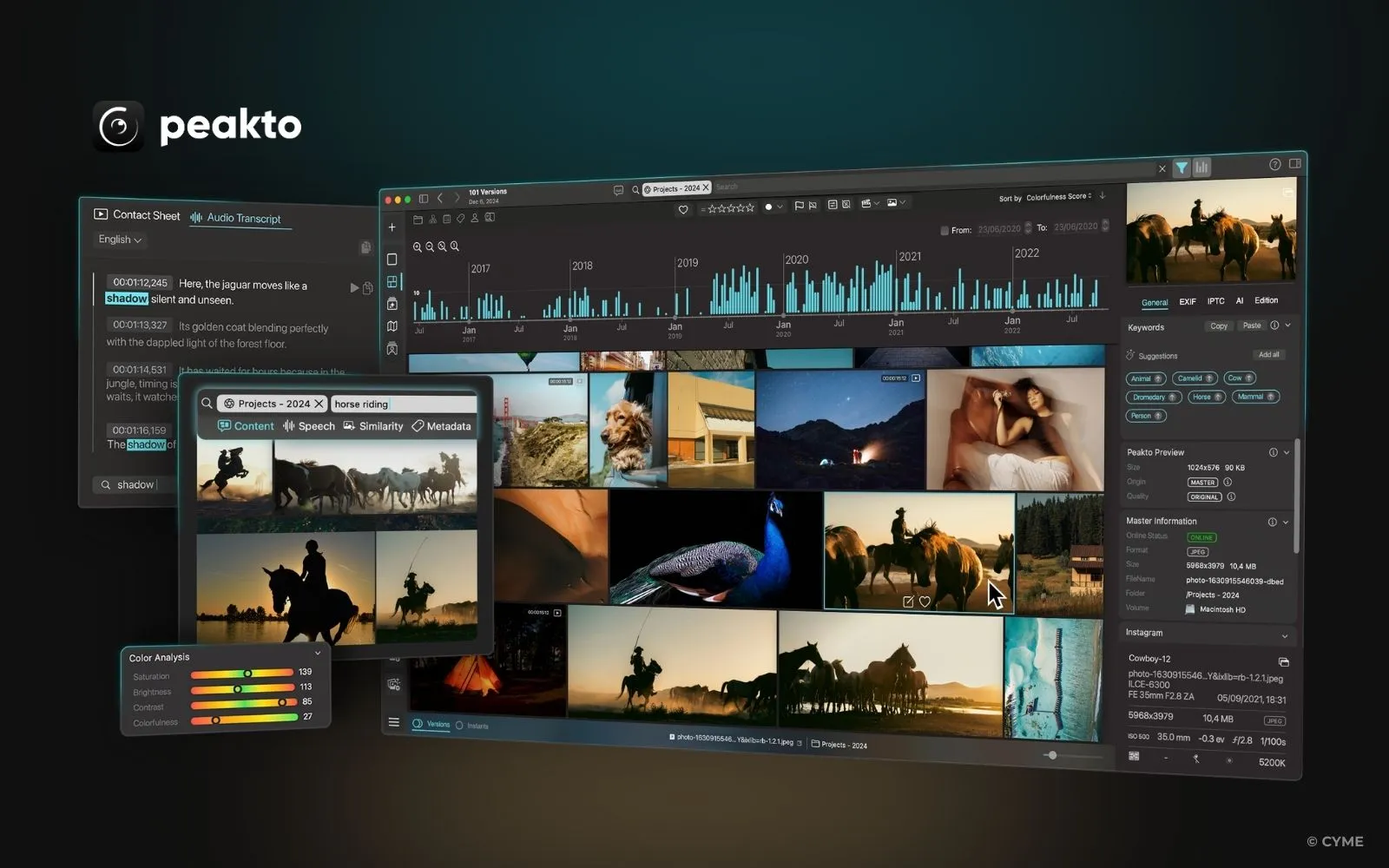
The best photo organizer really depends on what you need and how you like to work, but there are some clear standouts worth exploring. For Mac users, Peakto is a fantastic choice. It connects seamlessly with various editing apps, uses AI to organize your photos intelligently, and keeps your data private. Plus, it centralizes images from multiple sources and has powerful search tools to help you find exactly what you need.
If you’re a pro photographer, Adobe Lightroom is recognized for its comprehensive editing tools and robust organizational capabilities, suitable for both amateurs and professionals. Capture One’s combination of powerful organizational tools and high-quality editing capabilities makes it a standout choice for professionals and serious hobbyists.
Looking for something budget-friendly? ON1 Photo RAW offers an easy-to-use interface with features like AI-powered keywording, making organization a breeze. For a free option, Apple Photos is a great pick for Mac users, especially with its smooth integration across all your Apple devices.
Windows users aren’t left out either—ACDSee Photo Studio combines powerful cataloging (think facial recognition and batch processing) with advanced editing tools to keep your workflow efficient and organized.
At the end of the day, the “best” photo organizer is the one that fits your budget, handles your collection size, and meets your organizational needs, so don’t be afraid to try out a few and see what clicks!
How Much Does Photo Management Software Cost?
The cost of media management software varies widely depending on the features, functionality, and whether it’s a one-time purchase or subscription-based. Here’s a general breakdown:
Free Options
Affordable Paid Software
High-End Software
Many professional-grade photo management tools operate on a subscription model, offering varying pricing based on the features and capabilities they provide. For instance, Adobe Lightroom, which is part of the Adobe Creative Cloud Photography plan, starts at $9.99 per month and includes access to Photoshop. Capture One offers subscriptions starting at $24 per month, or the option to purchase the software outright, though pricing can fluctuate depending on the version and features selected.
Similarly, Peakto, which offers advanced features such as AI-driven organization and integration with multiple editing apps, is priced at around $9.99 per month or $99 per year, providing great value for photographers with complex organizational needs.
For those with more basic needs, free tools are available, offering simple solutions. Meanwhile, affordable subscription-based options are well-suited for photographers with more advanced workflows. When choosing the right software, it’s important to consider your budget, the size of your photo collection, and the features that will best support your daily work.
It’s important to carefully assess your requirements before choosing the right photo management software for your needs. Focus on features that will optimize your workflow and consider your long-term requirements to avoid switching solutions every year. The best approach is to choose a comprehensive software solution that can grow with you and eliminate the need for frequent changes.
Maximize Your Photography Workflow with the Right Tools

In the ever-evolving world of digital photography, efficient photo management is no longer a luxury but a necessity. Whether you’re a seasoned professional or an enthusiastic amateur, the right photo software can simplify your photo organization workflow, making it seamless and enjoyable. From organizing and tagging your images to creating stunning albums and selling your work, these tools are designed to enhance your productivity and creativity.
Embrace the power of photo management software to streamline your processes, ensuring that every captured moment is easily accessible and beautifully showcased. With the right tools at your disposal, you can focus on what truly matters—capturing and sharing the world through your unique lens.






